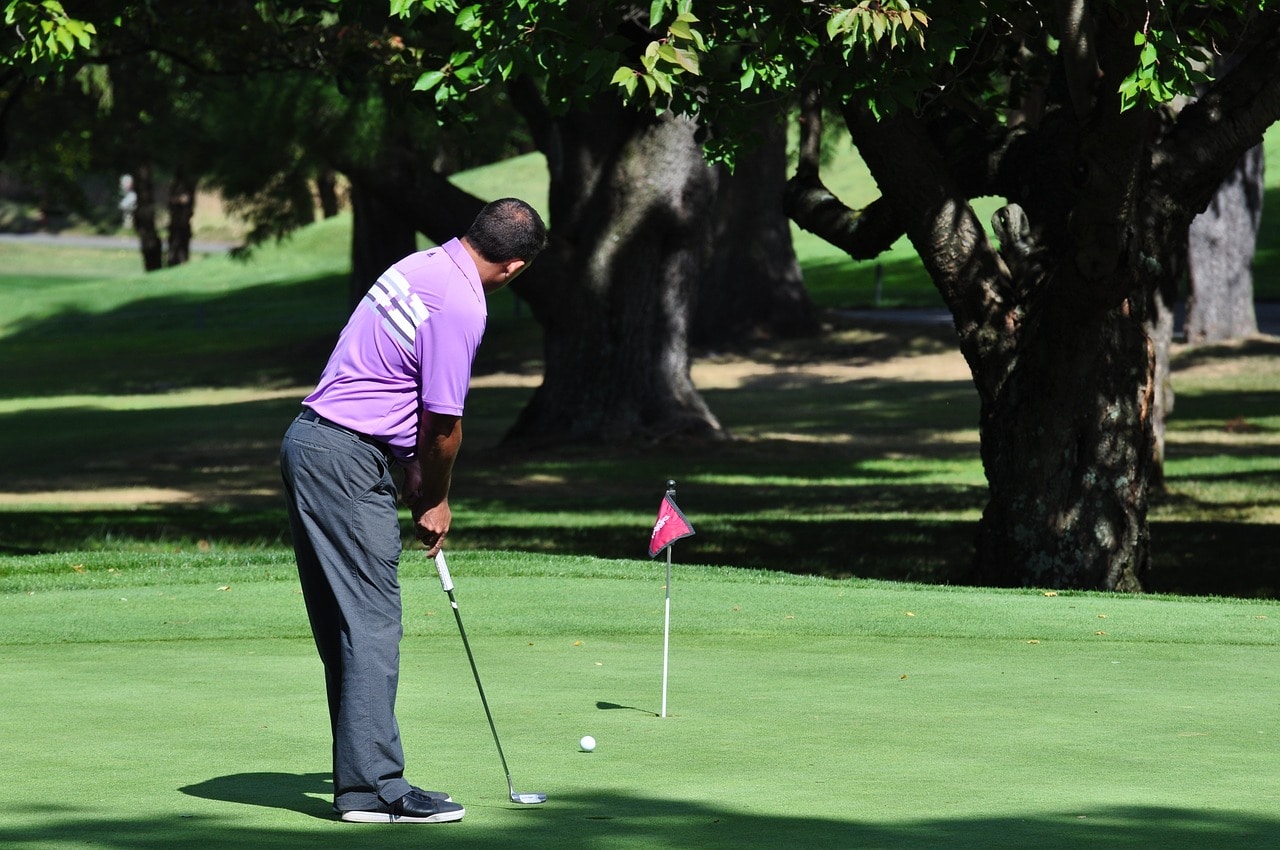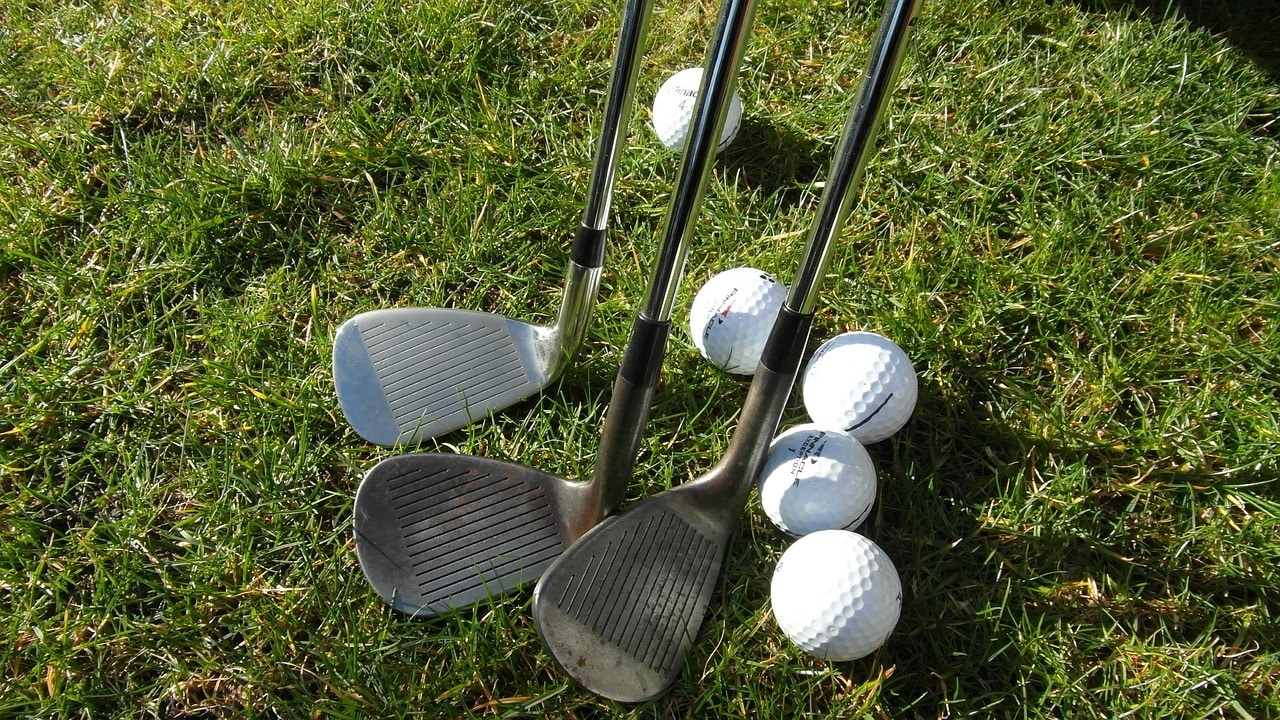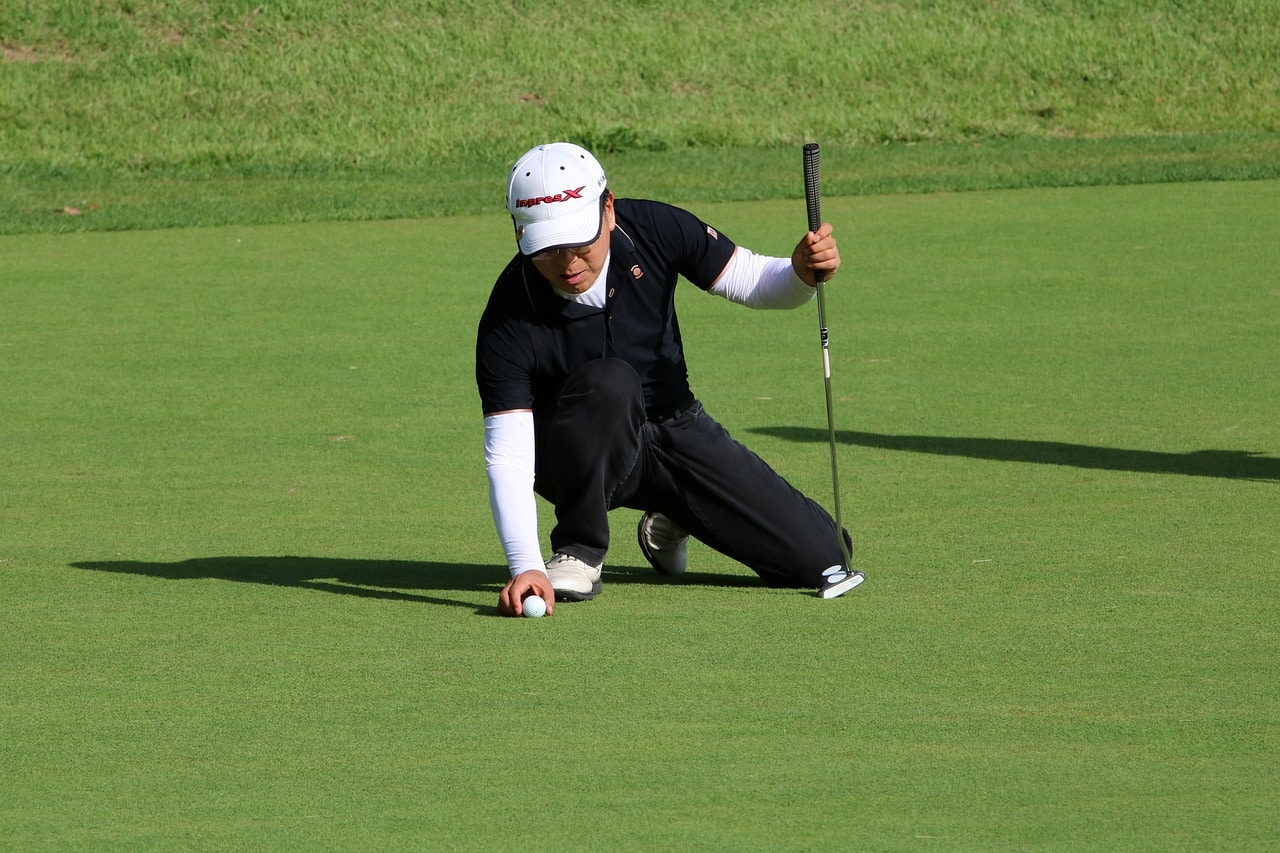How To Choose The Right Golf Club Grip
Table of Contents
Knowing how to choose the right golf club grip is an important skill for any golfer, regardless of their level of expertise. According to research from Golf Pride, over 80% of professional tour players use grips that are specifically tailored to fit their individual game and style. This statistic highlights just how vital it is for amateur golfers to select a suitable grip in order to improve their performance on the course. With this article, readers can gain insight into the various elements that should be considered when selecting a new golf club grip in order to make sure they achieve optimal results.
The first step towards choosing the correct grip involves understanding what material the grip is made out of and why this matters. Generally speaking, there are two main types: rubber or corded grips. Rubber grips provide maximum comfort and have excellent shock absorption capabilities due to its softness; however, it may wear down quickly after extended usage or exposure to extreme weather conditions. On the other hand, corded grips offer superior traction control while also being highly durable; yet some people find them uncomfortable because they tend to be quite firm against your hands.
Once you’ve determined which type of material would work best for you, there are numerous factors such as size and texture that must be taken into account before deciding on a particular product. For example, if you prefer more tactile feedback during swings then opting for textured grips might be ideal whereas those who want additional cushioning could benefit from larger-sized ones with softer surfaces instead. Additionally, certain manufacturers may even customize existing models further by adding alignment aids or ribbed patterns depending on personal preferences so paying attention to details like these is key when making your final choice.
Understanding Grip Sizes
It is important to choose the right golf club grip in order to play your best. However, selecting a suitable grip size can be challenging and confusing for beginners or even experienced players. Understanding how different sizes affect performance is key when making this decision.
Contrastingly, analyzing one’s swing style is also an integral part of finding the correct grip size. This section will focus on understanding grip sizes before delving into how to determine which type works best for you.
Grip sizes are measured by circumference — from small (standard), midsize and jumbo/oversized — with standard being the most common option among amateurs and professionals alike. A standard-size grip has a circumference of 4 1/4 inches; midsize grips measure 4 3/8 inches whereas oversized grips register at 4 5/8 inches in diameter.
The primary benefit of larger grips is that they provide more stability during the stroke, reducing wrist action and encouraging better hand placement throughout the motion. Smaller grips tend to increase control as well as providing more feel due to their reduced surface area allowing hands to come together easier during contact with the ball.
Understanding both your personal preferences and what fits your swing style are two aspects that should not be overlooked when choosing the right golf club grip. With this knowledge in mind, it becomes much easier to make an informed decision about which size will provide optimal performance on course.
Analyzing Your Swing Style
The truth of the theory that analyzing your swing style is key to selecting the right golf club grip can be verified by professional players. As golfers progress in the game, they learn how certain grips and styles suit their swings better than others. Consequently, it is important for each individual golfer to take time to analyze their own swing when looking for a suitable golf club grip.
To do this effectively, there are three main components that should be taken into account: club control, comfortability, and performance.
Club Control: This refers to the ability of a golfer to command and adjust their shots with different clubs during gameplay. Ideally, choosing a good grip will enable them to maintain greater control over ball direction while improving accuracy and shot shaping capabilities.
Comfortability: A comfortable grip size enables the golfer to relax their hands more easily throughout the backswing and downswing motions; hence giving them extra power behind every shot without compromising on precision or form.
Performance: The chosen grip must enhance overall performance as opposed to hindering it through too much torque or an uncomfortable fitment. Suitable grips will also provide superior feel when contacting the ball which gives feedback about where each shot has gone wrong (or right).
Therefore, taking all these factors into consideration allows golfers identify which type of golf club grip suits their swing best – leading ultimately lead to improved scores and enjoyment with each round.
Identifying Your Hand Size
Choosing the right golf club grip is a vital part of playing well. To ensure that your grip is comfortable, it’s important to understand how hand size and swing style impact selection. This article will focus on identifying your hand size as the third step in choosing a suitable grip.
First, assessing one’s natural swing style helps players determine what type of grip they need for optimal performance. Now, it’s time to assess hand size when selecting a grip. Hand measurements can vary from player to player and should be considered when making a purchase decision.
The best way to gauge the appropriate hand size is by measuring the circumference of both hands with a tape measure or ruler. The ideal golf club grip should fit comfortably within an individual’s palms; too big or small could cause discomfort while swinging which may lead to reduced accuracy and control during play. Generally, men’s grips are larger than women’s so this factor must also be taken into account when purchasing new grips for clubs.
To identify additional characteristics pertinent to finding the perfect golf club grip such as material options, explore our next section without missing out on any crucial steps in the process.
Exploring Different Grip Materials
Grips are a critical factor when selecting golf clubs. Different materials affect the feel of the club and how well your hand can hold it during play. An ideal grip should be made from a material that provides enough traction to keep you in control, but also feels comfortable on your hands. The four main grip materials used for golf grips are rubber, cord, leather and synthetic.
Rubber is probably the most common type of grip material available on the market today. It offers good tackiness and durability over time, making it an excellent option for those wanting reliable performance throughout their rounds of golf. Cord grips offer more feedback than rubber ones; they are great if you like feeling every shot as you hit it. Leather is another popular choice among professional players due to its softness and comfort level; however, it isn’t always suitable for wet weather conditions because it tends to slip easily when wet. Synthetic grips provide similar levels of traction with less maintenance required compared to other types of grip material, making them a good option for casual players who want functionality without worrying about upkeep or replacement costs.
Your selection will depend on personal preference and playing style, so take some time to try out each material before investing in new clubs. Make sure to check which type of grip comes standard with new sets before purchasing them – this way you won’t have any surprises once you start using them! Additionally, consider factors such as cost-effectiveness and sustainability when choosing your preferred material since these could greatly affect the longevity of your set of clubs over time.
Each grip material has unique properties that may suit different styles better than others – think about what matters most to you (feel, affordability etc.) while evaluating all options thoroughly before making a final decision. With careful consideration put into each element involved in choosing the right golf club grip – including size, shape and now material – golfers can enjoy improved comfortability and accuracy during gameplay .
Considering Grip Shapes
Grip shapes can play an important role when selecting the right golf club grip. There are several different styles of grips available, ranging from round to ribbed and beyond. Each shape offers its own advantages when it comes to comfort, control, and performance while playing a round of golf. It is important for players to consider what type of grip shape will best meet their individual needs before making a purchase.
For those who prefer more cushion or shock absorption during their game, rounded grips may be the ideal choice. This style of grip generally helps absorb vibration due to its larger surface area, allowing golfers to maintain a firm but comfortable hold on their clubs throughout each swing. On the other hand, longer and thinner ribbed grips are often chosen by those who desire greater precision and accuracy with their shots as they give players improved feedback in terms of feel and power transfer through impact.
Additionally, there are hybrid grip shapes that provide some combination of characteristics from both rounded and ribbed designs. These types include flat-top designs which offer enhanced torsional stability as well as maximum dampening benefits; plus pistol shaped grips which allow for greater wrist movement without compromising overall control during a shot. Ultimately, finding the correct grip shape should take into account one’s particular preferences along with any physical limitations or conditions such as arthritis that might affect how comfortably and effectively they can use the club during play.
Each golfer has unique requirements when it comes to choosing the perfect grip for their game; however considering various shapes allows them to find one that meets all their needs both technically and ergonomically so they can enjoy better results out on the course. With this knowledge in mind, they then move onto examining another key factor – the tackiness level of the material used in creating the desired form of grip…
Examining Grip Tackiness
A recent survey discovered that 86% of golfers prefer a grip with a tackier feel than one without. This statistic highlights the importance for golfers to pay close attention when examining the tackiness of their club grips before committing to them.
The main reason why it is essential to consider the amount of tackiness in a grip is because it affects the degree of control and comfort you have over your shots. A grip which has too little or no tackiness may make it difficult for you to maintain your desired hand position, resulting in inconsistent contact between the ball and clubface. On the other hand, if a grip is too sticky, then this can cause unnecessary tension in your wrist and arms as well as reduce flexibility during your swings. It is therefore important to find an ideal balance between these two extremes so that you can achieve optimum performance on course.
To identify whether a particular golf grip offers the right level of tackiness for you, there are several tests available such as squeezing and pinching exercises where you can evaluate how firm or soft they feel against your fingers and palms. If it feels too hard or slippery, try another model until you find something more suitable for your needs. Additionally, some manufacturers offer samples which can be requested online so that you can actually test out different models prior to purchasing them.
It is thus critical that golfers take into account characteristics like grip tackiness when selecting new clubs since this plays an integral role in providing optimal performance on course. Finding the perfect combination of factors such as shape and texture will help ensure maximum accuracy and consistency during every shot taken.
Testing Grips Before Committing
A good grip can make all the difference when it comes to golf. As the saying goes, “You have to learn the rules of the game and then you have to play better than anyone else”; thus, finding the right golf club grip is an essential step for any golfer. The seventh step in choosing a suitable grip involves testing different grips before committing to one.
Testing out various grips allows players to find what works best for them while also providing insight into how they will perform on course. Golfers should test their chosen grip by taking several practice swings with it and making sure that it feels comfortable and secure as well as allowing for proper technique execution during each swing. Additionally, examining how far potential shots travel with different clubs can help eliminate certain grips from consideration if desired distances are not achieved or remain inconsistent.
It is important to keep in mind that a player may need more than one type of grip depending on their preference and playing style. Variations such as wrap-style versus corded styles may be able to provide additional comfortability or improved control over long drives and short pitch shots respectively, which makes testing multiple types of grips even more crucial prior to settling on just one option. Furthermore, factors like weather conditions should be taken into account when selecting a grip since rain can reduce tackiness in some materials and cause slippage during swings due to wet hands or gloves.
Golfers must remember that there are no universal rules when it comes down to personal preferences regarding equipment – what works for one person might not work for another so testing out different options beforehand increases chances of successful performance throughout a round of golf. Ultimately, taking time out to try various grips is necessary in order to ensure that golfers obtain maximum satisfaction from their choice within budget limits without sacrificing performance quality along the way.
Conclusion
Golf club grips are an essential part of the game and understanding how to choose one can be a major factor in improving your performance. To make sure you have the right grip, it is important to consider size, swing style, hand size, materials, shape, tackiness and test them out before making a final commitment. It is like finding the perfect pair of shoes for yourself – even if they look attractive on someone else’s feet, that does not mean they will be comfortable for you.
Just as people come in different shapes and sizes so do golf clubs. As such, there needs to be careful consideration given when selecting a club grip that suits your specific requirements. Finding the correct balance between comfort and control is key; too much or too little of either could cause problems with technique which results in poor play.
Ultimately, choosing the best golf club grip requires patience and research but once you find what works for you then playing golf should become easier and more enjoyable. Like any other tool in life – from cars to kitchen appliances – it takes time to determine what fits your individual needs best but ultimately leads to satisfaction and improved performance.




